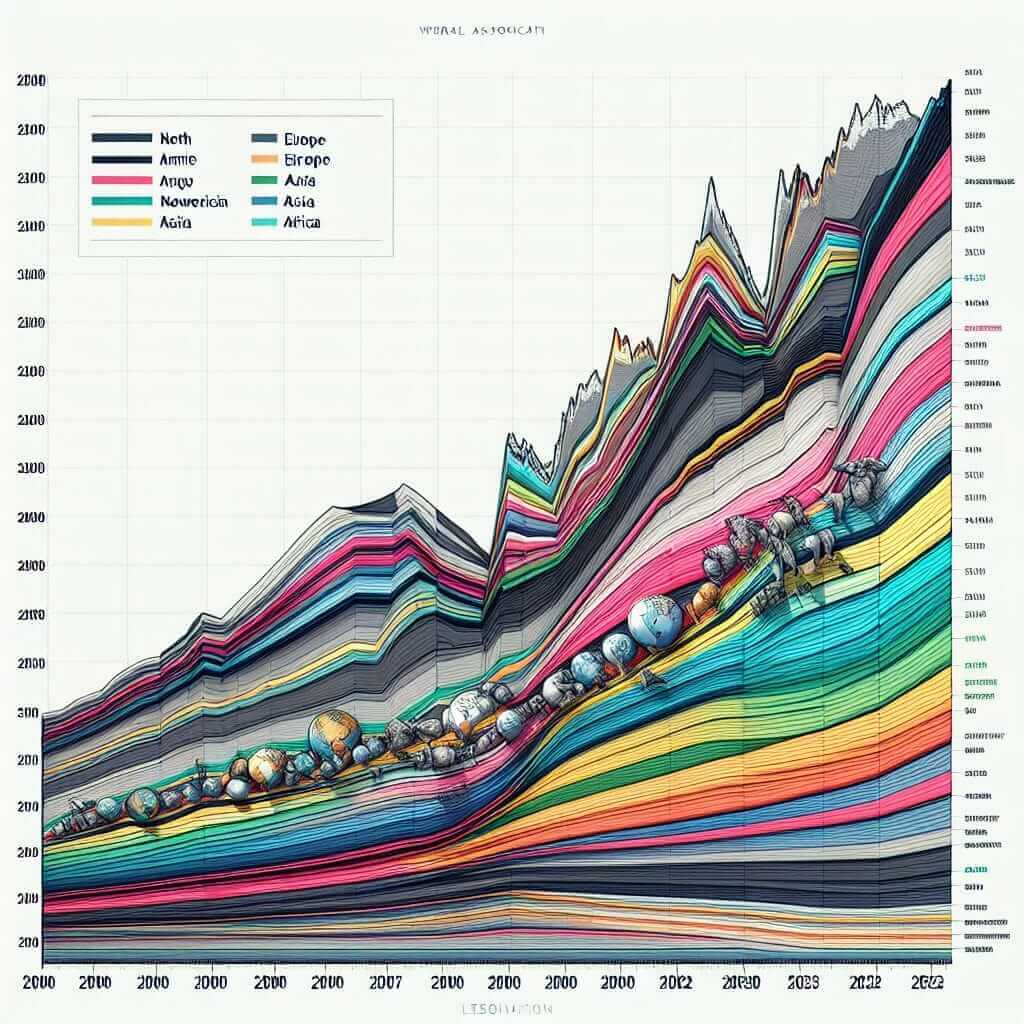Understanding the trends in global trade from 2000 to 2023 is not only crucial for those in the business or economics fields but also holds significant importance for IELTS candidates, especially for IELTS Writing Task 1. This article will help you grasp the essential elements of writing about such trends, including detailed grammar, vocabulary, and practical tips.
Let’s begin with a couple of sample IELTS Writing Task 1 prompts related to this topic:
- The graph below shows the trends in global trade exports from various regions between 2000 and 2023. Summarize the information by selecting and reporting the main features, and make comparisons where relevant.
- The table below illustrates the growth rates in global trade from 2000 to 2023 across different continents. Summarize the information by selecting and reporting the main features, and make comparisons where relevant.
For this guide, we’ll select the first prompt and create a detailed sample task response.
Main Content
Choosing a Sample Task
We’ll work on the following prompt:
The graph below shows the trends in global trade exports from various regions between 2000 and 2023. Summarize the information by selecting and reporting the main features, and make comparisons where relevant.
Data Illustration
Here is a hypothetical line graph to help visualize the trends:

Global Trade Exports (2000-2023)
- North America: Fluctuated, peaking in 2010, then declining.
- Europe: Gradual increase until 2015, stable thereafter.
- Asia: Steady growth, significant rise after 2015.
- Africa: Slow growth with minor ups and downs.
Analyzing the Task
- Identify the time frame: 2000-2023.
- Key regions: North America, Europe, Asia, Africa.
- Trends:
- North America: Variable with peaks and declines.
- Europe: Consistent increase then stability.
- Asia: Strong, continuous upward trend.
- Africa: Modest growth with minor fluctuations.
Writing the Sample Response
Sample Response:
The line graph illustrates the export trends of various regions worldwide from 2000 to 2023. Generally, while some regions experienced steady growth, others had variable patterns over the specified period.
Asia exhibited the most consistent and robust growth among all regions. Starting at a moderate level in 2000, it experienced a steady increase, with a significant surge post-2015, peaking in 2023. In contrast, Europe displayed gradual growth up to 2015, after which it stabilized, maintaining a steady level of exports until 2023.
North America’s exports, however, fluctuated throughout the timeframe. It peaked in 2010, followed by a downward trend, indicating inconsistent export volumes. Meanwhile, Africa experienced the least dynamic growth, with minor increases and occasional small declines.
In summary, Asia’s trade exports showed remarkable growth, especially in the latter years, while North America’s performance was more erratic. Europe and Africa had more modest and stable trends.
Word count: 159
Key Points to Remember
Vocabulary:
- Fluctuate (verb) /ˈflʌktʃueɪt/ – to rise and fall irregularly.
- Gradual (adjective) /ˈɡrædʒuəl/ – proceeding slowly by degrees.
- Surge (noun) /sɜːrdʒ/ – a sudden powerful forward or upward movement.
- Consistent (adjective) /kənˈsɪstənt/ – acting or done in the same way over time.
- Stabilize (verb) /ˈsteɪbəlaɪz/ – to make or hold steady.
- Peaking (verb) /piːkɪŋ/ – reaching the highest point.
- Dynamic (adjective) /daɪˈnæmɪk/ – characterized by constant change, activity, or progress.
Grammar Tips:
- Use the present perfect tense for actions that have continued up to the present: “Global trade has increased significantly…”
- Use comparative structures to make comparisons: “more developed than,” “less stable than.”
- Ensure accurate subject-verb agreement: “Asia’s exports show,” “North America’s exports fluctuate.”
Conclusion
Approaching an IELTS Writing Task 1 involves carefully analyzing the data presented, identifying the key trends, and articulating them clearly. Using appropriate vocabulary and ensuring grammatical accuracy are paramount for achieving a high band score. Practice these skills with various data sets to refine your ability to describe trends compellingly and coherently.
By focusing on clarity, structure, and key information, you can effectively tackle any IELTS Writing Task 1 prompt, particularly those related to trends in global trade.